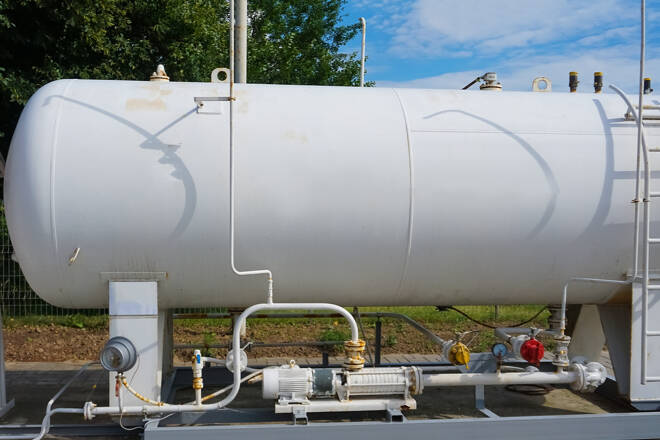Advertisement
Advertisement
Natural Gas Price Fundamental Daily Forecast – EIA Report is Expected to Show More Storage Improvement
By:
According to Natural Gas Intelligence (NGI), estimates ahead of the EIA report showed withdrawals from 133 Bcf to as much as 155 Bcf.
Natural gas futures are trolling near a fresh 21-month low on Thursday, shortly before the release of the latest government storage report. The catalysts behind the selling pressure are forecasts calling for less cold weather and lower heating demand over the next two weeks than previously expected.
Although production is expected to drop this week due to winter freezes, traders have decided to shrug off the news because it’s expected to be a short-term event. Furthermore, a 5% drop in LNG demand is likely offsetting the potentially bullish news.
At 11:58 GMT, March natural gas is trading $2.497, up $0.029 or +1.18%. On Wednesday, the United States Natural Gas Fund ETF (UNG) settled at $8.50, down $0.82 or -8.80%.
Short-Term Weather Outlook
According to NatGasWeather, “Frosty conditions will continue across the northern and central US the next 3-days with/rain, snow, and chilly lows of -10s to 20s for strong demand, while aided by lows of 20s to 30s into Texas.
The far West will be comfortable with highs of 40s to 60s, while nice over the Southeast with highs of 60s to 80s.
Cold air will retreat to the northern tier this weekend into next week, while the southern 2/3 of the US warms into the nice 50s to 70s.
Overall high to very high demand the next 3-days, then low.
US Energy Information Administration Weekly Storage Report
A closely eyed US Energy Information Administration (EIA) report on tap this morning is expected to show more improvement in the storage picture.
NatGasWeather’s survey averages suggest a draw of -142-144 Bcf, smaller than the 5-year average of -181 Bcf. The firm further added that it was cooler than normal over the western ½ of the US, while much warmer than normal over the eastern ½ of the US. Because of this, they expect a draw of -137 Bcf, and if close, will increase surpluses to near +170 Bcf.
According to Natural Gas Intelligence (NGI), estimates ahead of the EIA report showed withdrawals from 133 Bcf to as much as 155 Bcf.
That was the range of a Reuters survey of 14 analysts, which showed a median decline in stocks of 142 Bcf. Bloomberg’s smaller survey of eight analysts had a tighter range that produced a median draw of 145 Bcf. A Wall Street Journal poll averaged at a 144 Bcf pull. NGI modeled a 141 Bcf draw.
For comparison, the EIA recorded a 261 Bcf withdrawal for the similar week last year, and the five-year average draw stands at 181 Bcf.
Short-Term Outlook
If the government figures come in as expected, the current surpluses to both year-earlier and five-year average levels are set to expand. Although the current bitter winter weather hitting parts of the United States is likely to drag down inventories a bit in next week’s EIA report, the warmer weather expected beginning this weekend and through mid-February may push surpluses to more than 250 Bcf, if not closer to 300 Bcf.
While the current oversold technical conditions could put in a short-term bottom at any time, the trend may not necessarily change to up. Fundamentally, the weather remains the key. With additional bearish patterns throughout the month likely to fuel another leg lower.
For a look at all of today’s economic events, check out our economic calendar.
About the Author
James Hyerczykauthor
James Hyerczyk is a U.S. based seasoned technical analyst and educator with over 40 years of experience in market analysis and trading, specializing in chart patterns and price movement. He is the author of two books on technical analysis and has a background in both futures and stock markets.
Advertisement
